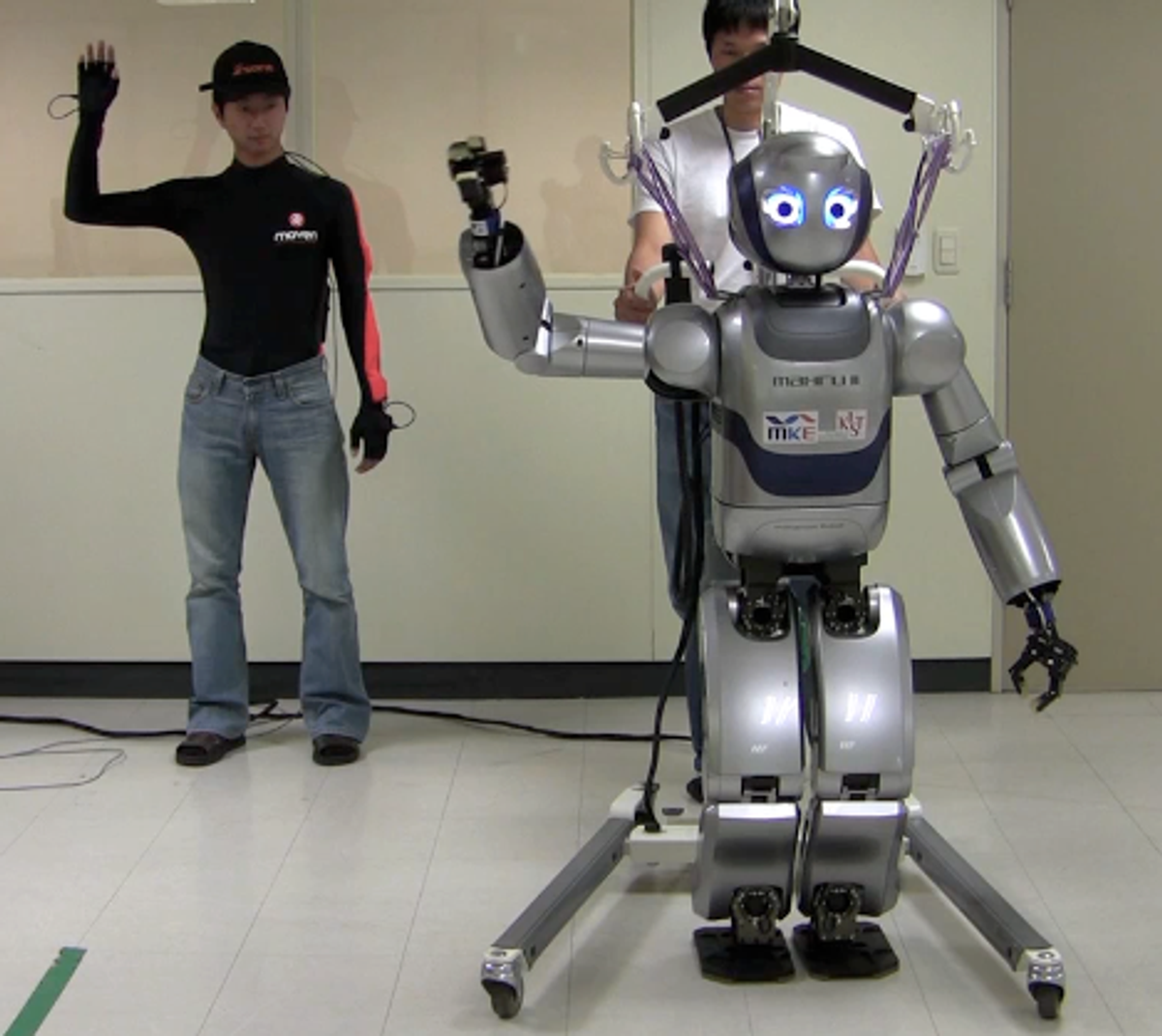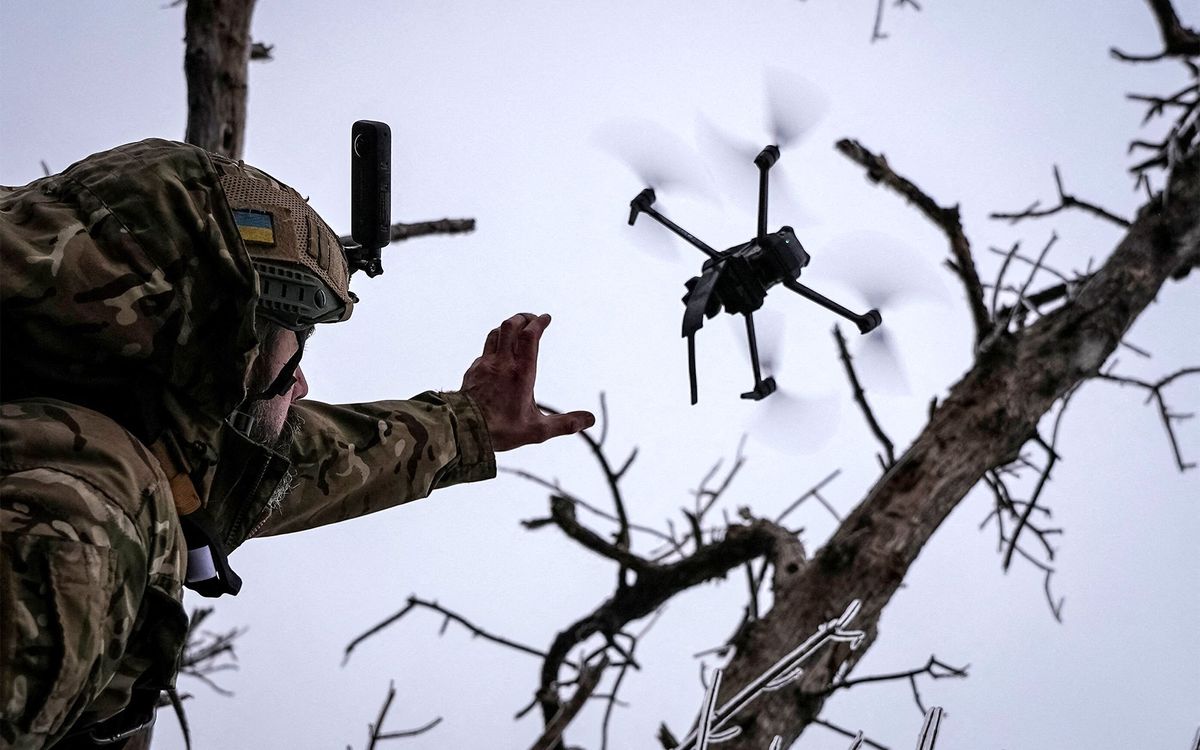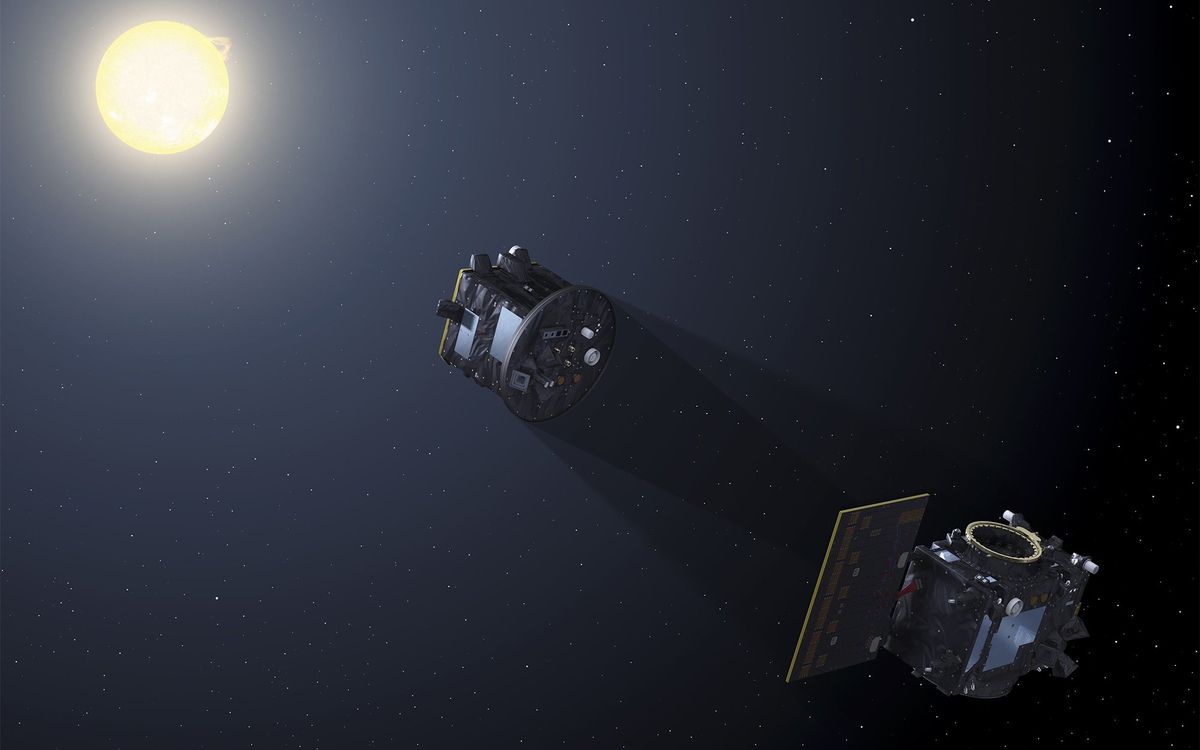Mahru, an advanced humanoid robot developed by the Korea Institute of Science and Technology (KIST) and Samsung Electronics, knows its way around a kitchen. In a demonstration, the robot popped a snack into the microwave and brought it over to a researcher standing nearby.
Mahru can also dance and perform Taekwondo moves. (More on that later.)
Now how do the KIST researchers go about programming Mahru to do all these different tasks? I asked this question when I visited KIST early this year.
Dr. Bum-Jae You, head of KIST’s Cognitive Robotics Center, in Seoul, told me that they use two approaches. One involves filming a person with body markers using a traditional optical motion-capture system to track body movements. The other, which they’ve been using more recently, relies on a wearable inertial motion-capture suit [shown in the photo above].
A person wears the suit while performing various tasks. The movements are recorded and the robot is then programmed to reproduce the tasks while adapting to changes in the space, such as a displaced objects.
But the cool thing is, the capture and reproduction of movements can also take place in real time. When I visited, Dr. You and his students demonstrated this capability using a Mahru III robot.
When the operator moves his arms, Mahru moves its arms. There’s virtually no delay. The only task when there is a delay is when the robot is walking—if the operator takes a few steps, the robot follows suit after a few seconds. But Dr. You told me they’re working to do that in real time as well.
There are several telepresence robots in operation, and many more should be available soon. But typically an operator has control only over the robot’s legs or wheels; very few allow for full-body remote operation.
Mahru’s arm movements under teleoperation are quite impressive—fast and precise, and also safe, thanks to force-torque sensors and compliant control. Eventually, Dr. You says, a person will be able to teleperate a robot to manipulate objects. They’ll also be able to shake your hands without crushing them.
Note on the photo above the operator with the motion-capture suit (behind the robot) extending his right hand—while the robot does the same.
Dr. You and his team also showed me Mahru’s dancing capabilities. This demo involved an earlier version of the Mahru robot [below]. Fascinating to see the “guts” of the machine—including the little sticker saying “Dancer.”
Erico Guizzo is the Director of Digital Innovation at IEEE Spectrum, and cofounder of the IEEE Robots Guide, an award-winning interactive site about robotics. He oversees the operation, integration, and new feature development for all digital properties and platforms, including the Spectrum website, newsletters, CMS, editorial workflow systems, and analytics and AI tools. An IEEE Member, he is an electrical engineer by training and has a master’s degree in science writing from MIT.







